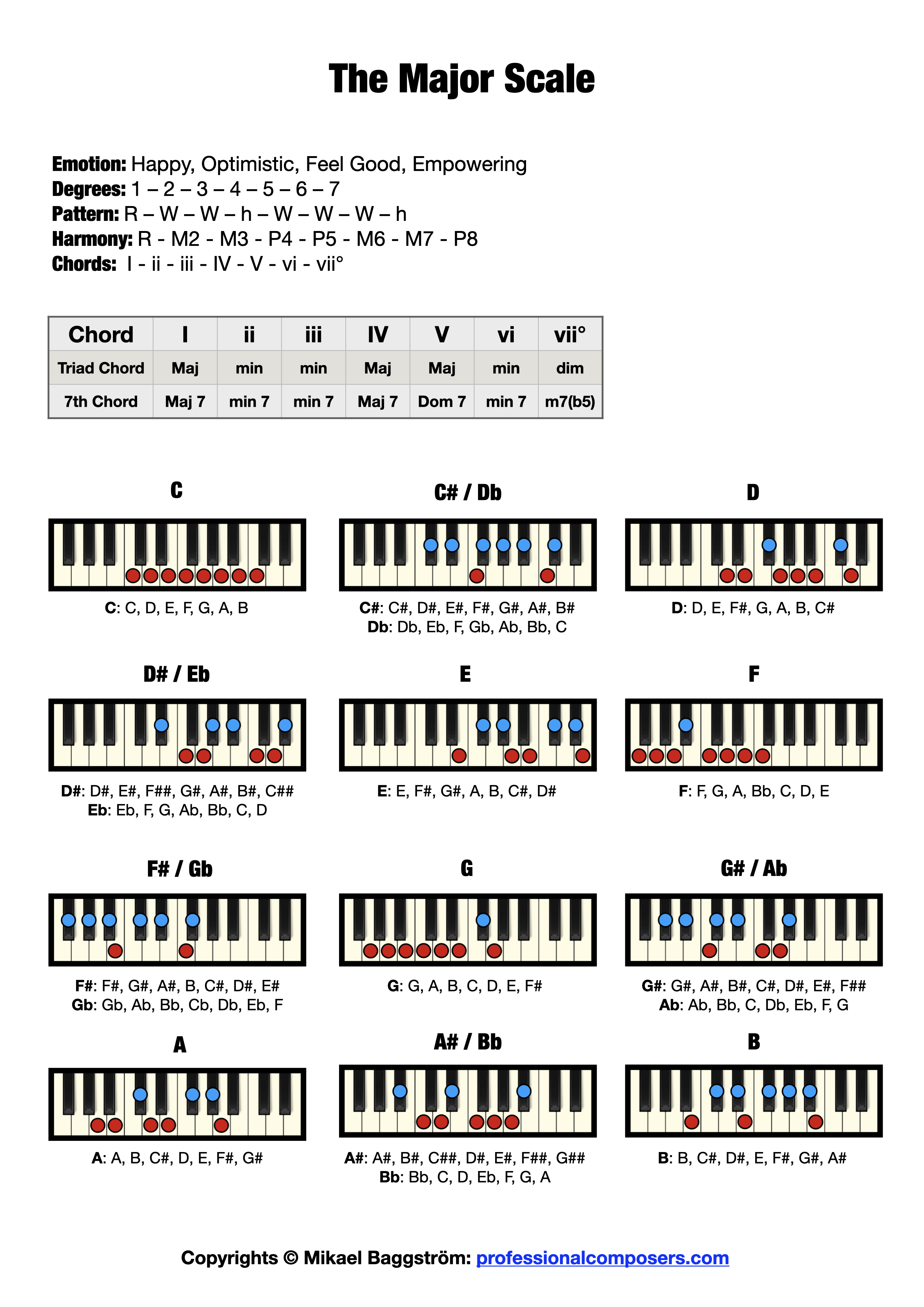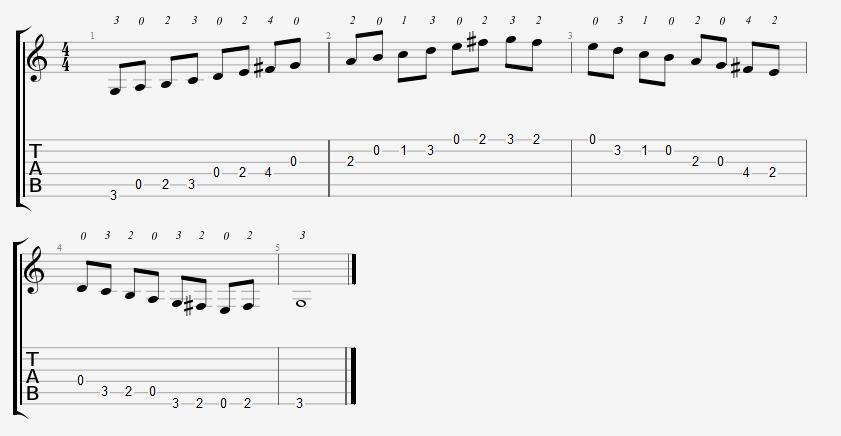

The only difference is the one black key, F sharp, that’s added when going from C major to G major. The G major scale will use the exact same fingering as C major. On the piano, playing the G major scale doesn’t feel that much different from the C major scale. How do you tell the G major scale from the C major scale? Try them both and see which one helps you the most! You can use tricks like this to help you play any scale with two hands, though the letter names, finger numbers, and the pattern of when to cross over and under will change depending on what scale you’re playing. Going down: G, F sharp, E, thumb D, C, three B, A, G Going up: G, A, B, thumb C, D, three E, F sharp, G

Instead of the words “right” and “left” you could also use “thumb” and “three.” Going down: G, F sharp, E, left D, C, right B, A, G Going up: G, A, B, right C, D, left E, F sharp, G Once you’re playing with both hands together, try singing or saying the letter names with reminders of when to cross over or under like this: Only then should you try putting your right and left hands together.

Here are a few ideas you can use to help you do this.įirst, play each hand separately, very slowly, until you’re completely comfortable with the G major scale notes for one hand at a time. It can be a little tricky to play one octave scales with hands together because the right hand and left hand are crossing fingersat different times. When coming down the scale, simply reverse the finger order like this: Left hand placement for the G major piano scale:

Right hand placement for the G major piano scale: To play the G major one octave scale, start with your fingers in the same position as the pentascale and play like this: You won’t play the F sharp unless you’re playing the full scale. Notice that when you play the G major pentascale, you don’t need to use any sharps. For your right hand, place fingers like this:įor your left hand, place fingers like this: How do you play the G major scale on piano? You’ll see this pattern continue as you go through all the sharp key signatures in order of increasing number of sharps, with the next one, the key of D, adding a C sharp (one note below D) to make two sharps, then the next one, the key of A, adding a G sharp (one note below A) to make three sharps, and so on. Notice that the raised note is F sharp, the very last tone of the scale before the scale starts over on G. G major has the fewest sharps of all sharp key signatures, which are for keys that require one or more notes to be sharp. The notes of the G major scale are G, A, B, C, D, E, and F sharp. The G major scale is starts on G and has one sharped note, F sharp.


 0 kommentar(er)
0 kommentar(er)
